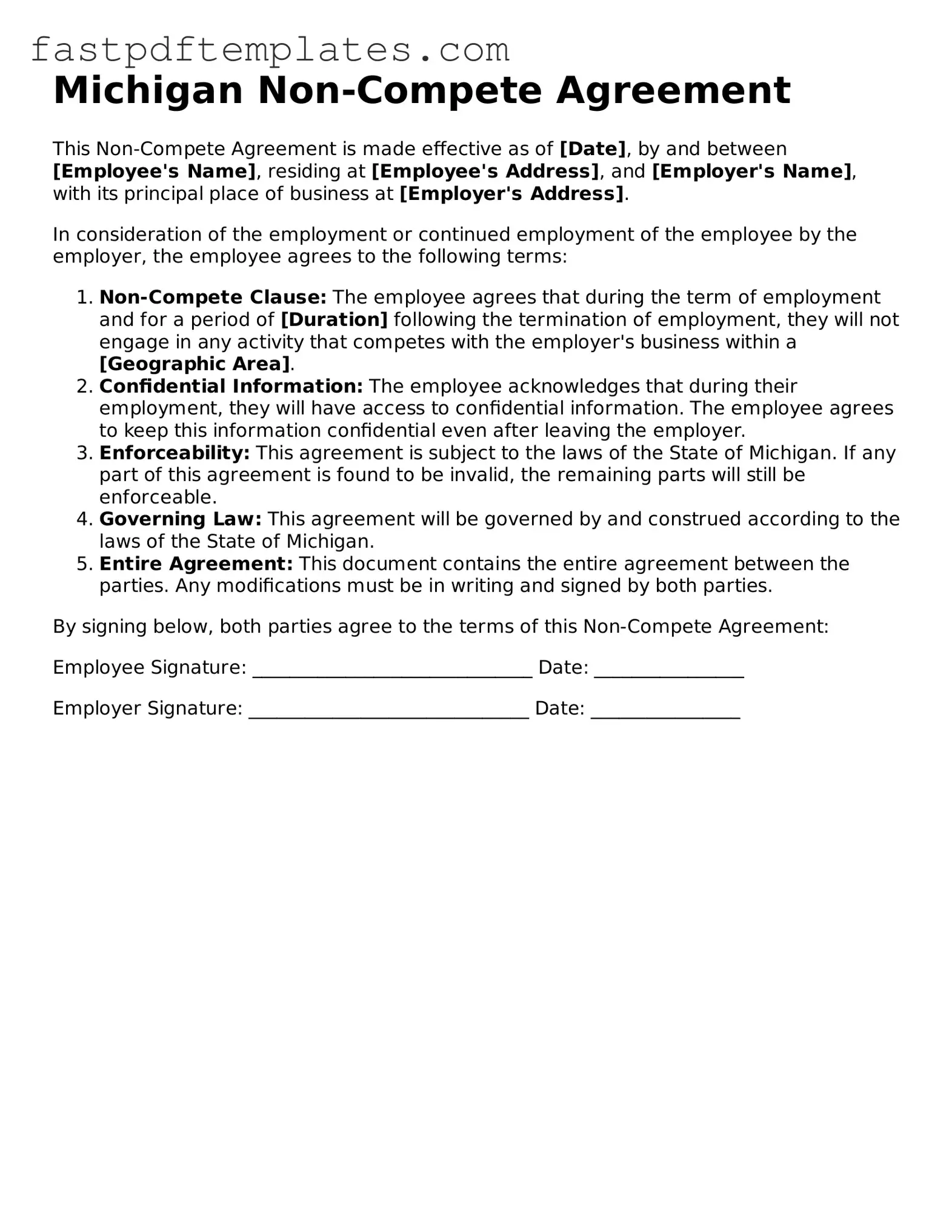The Michigan Non-compete Agreement is similar to the Non-disclosure Agreement (NDA). Both documents are designed to protect sensitive information. While a non-compete focuses on restricting employment opportunities, an NDA safeguards proprietary information from being shared with outsiders. Employers often use both to ensure that their trade secrets and business strategies remain confidential and secure, creating a comprehensive approach to protecting their interests.
Another document that shares similarities is the Employment Agreement. Like the non-compete, an employment agreement outlines the terms of employment, including duties, compensation, and duration. However, it may also include clauses regarding confidentiality and non-compete provisions. This ensures that employees understand their obligations both during and after their employment, providing clarity and legal backing for the employer.
The Confidentiality Agreement is closely related as well. This document, much like the non-compete, seeks to protect a company’s proprietary information. While a non-compete restricts future employment opportunities, a confidentiality agreement focuses on preventing the sharing of confidential information during and after employment. Both are essential tools in maintaining a company's competitive edge.
The Proprietary Information Agreement (PIA) is another document that aligns with the non-compete agreement. A PIA specifically protects intellectual property and proprietary data from being disclosed to third parties. While a non-compete agreement restricts where an employee can work after leaving, a PIA emphasizes the importance of keeping sensitive information within the company. Together, they create a robust framework for protecting business interests.
Similar to the non-compete agreement is the Independent Contractor Agreement. This document outlines the relationship between a business and an independent contractor, including terms that may restrict the contractor from working with competitors. While it serves a different purpose, both agreements aim to protect the company’s interests and prevent unfair competition.
The Partnership Agreement also bears resemblance to the non-compete agreement. This document governs the relationship between business partners, often including clauses that restrict partners from competing against the business after leaving. Both agreements aim to maintain a healthy business environment and protect the interests of the involved parties.
The Non-solicitation Agreement is another document that shares common ground with the non-compete agreement. This type of agreement prevents former employees from soliciting clients or employees of the company after their departure. While the non-compete restricts employment opportunities, the non-solicitation agreement focuses on preserving the company’s client relationships and workforce stability.
The Licensing Agreement can also be compared to the non-compete agreement. While a licensing agreement allows one party to use another's intellectual property under specific conditions, it may include non-compete clauses to prevent the licensee from competing directly with the licensor. This ensures that both parties can benefit from the agreement without jeopardizing each other’s market position.
Additionally, the Shareholder Agreement can be likened to the non-compete agreement. This document outlines the rights and responsibilities of shareholders in a company, often including non-compete clauses to protect the business from competition by former shareholders. Both agreements serve to ensure that all parties act in the best interest of the company.
Lastly, the Franchise Agreement is similar to the non-compete agreement in that it often contains clauses that restrict franchisees from competing with the franchisor. This document establishes the terms under which a franchisee can operate, ensuring that the brand remains protected and that franchisees do not undermine the business model. Both agreements are crucial in maintaining brand integrity and market position.
